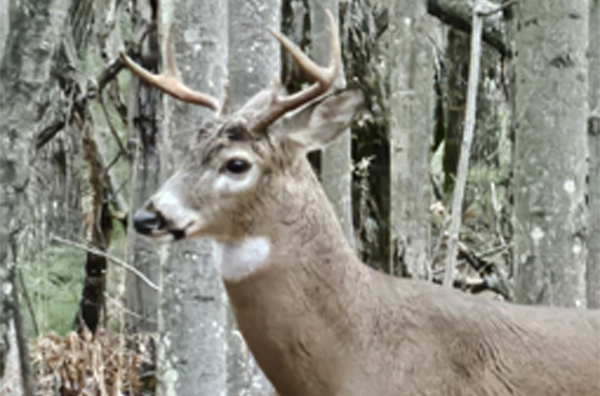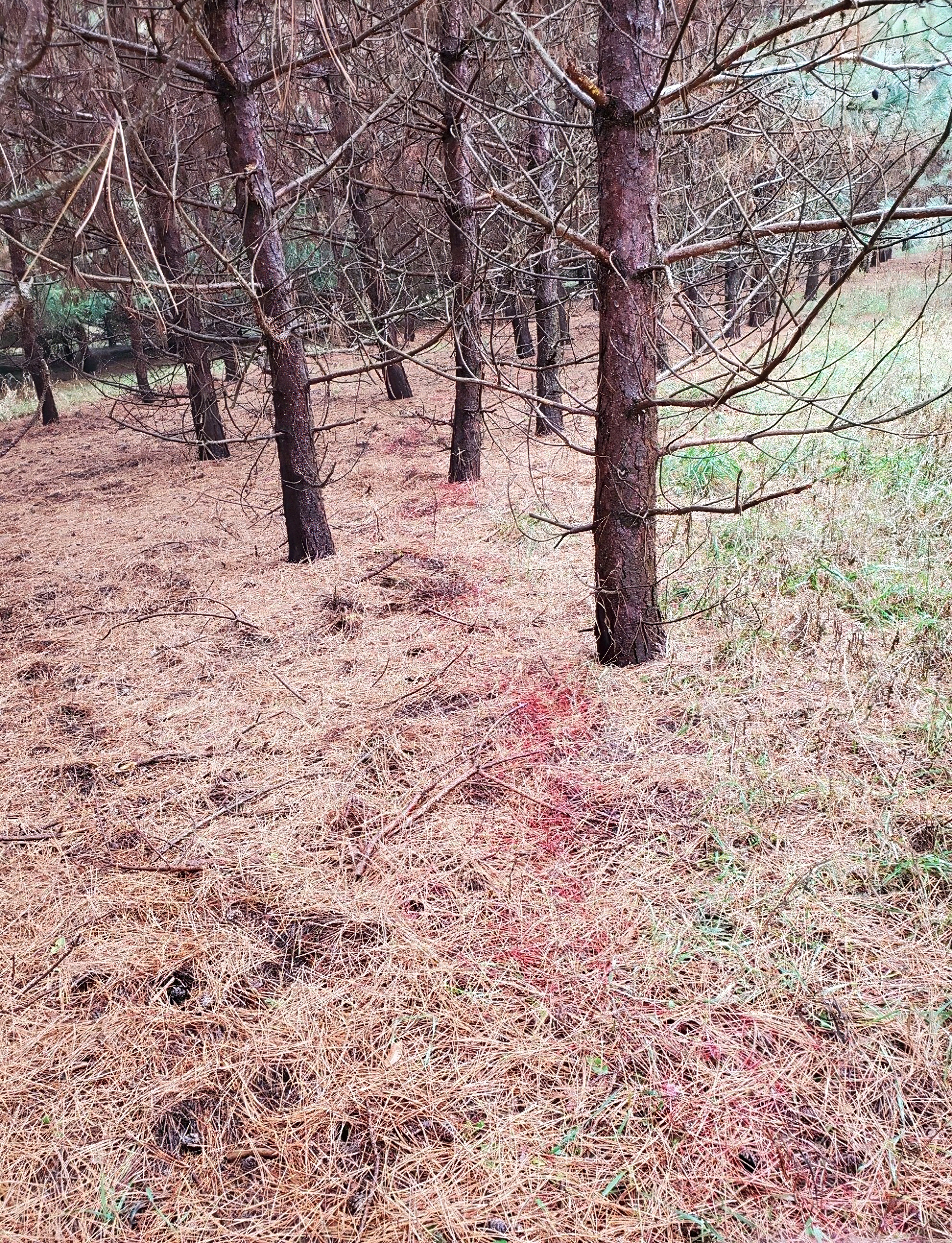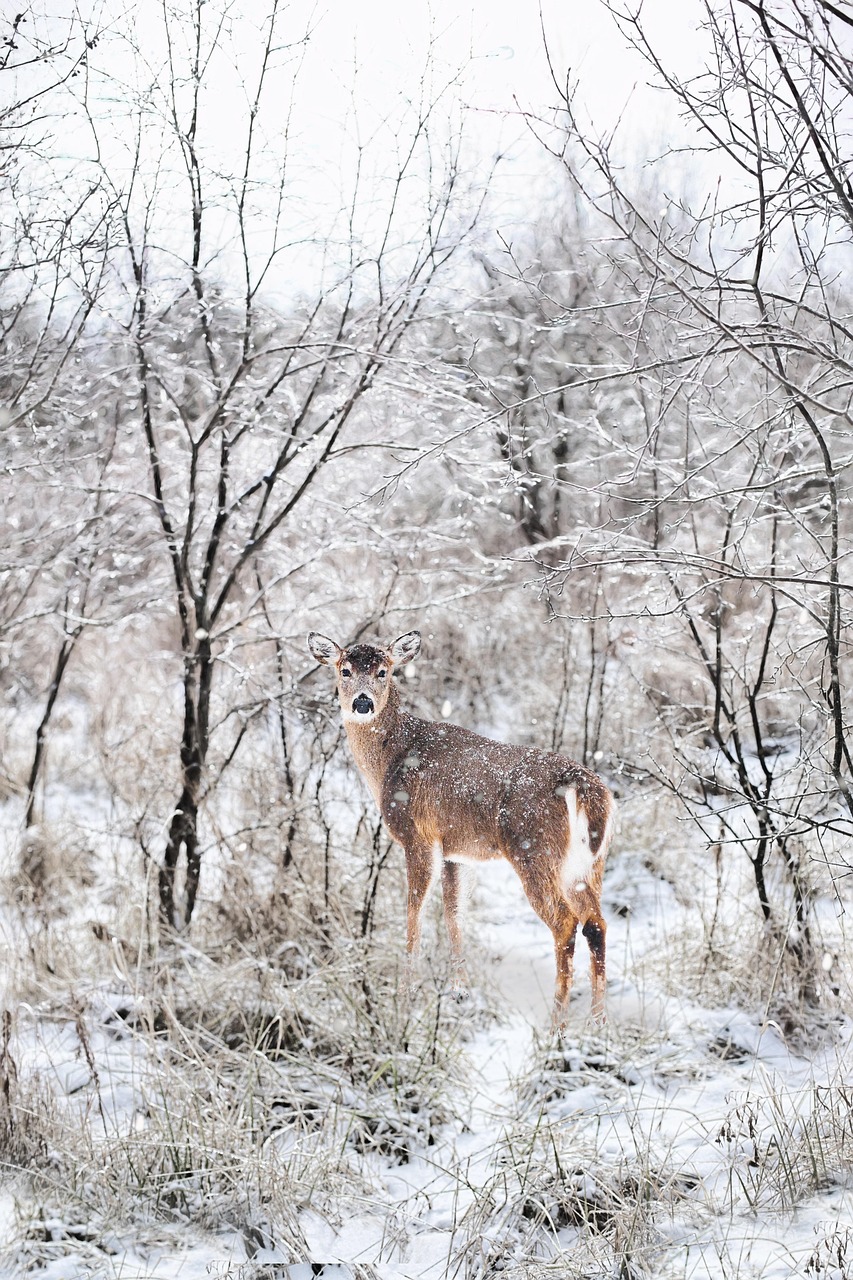Gut Shot, Liver Hit, or Lungs? Know When to Track and When to Wait
I still shake like a leaf after shooting a deer. It's the fun part of whitetail deer hunting. While bowhunting, my passion for 50 years, my shot placement has never dropped an animal on the spot. Not many archery hunters do. We strain hard to hit vital organs which allows the animal to bolt.
Some can't run far. Others go much farther than we ever want. Tracking skills are every bit as important as being able to hit your target accurately. A hunter's excitement and adrenalin rush that comes after a seemingly good hit can disappear amazingly fast when the blood trail runs out.
The shot is the culmination of countless hours of scouting, practice, and patience. For an archery deer hunter in Michigan, that moment a broadhead finds its mark is a mix of exhilaration and immediate, gut-wrenching anxiety.
Did I make a good hit? Where did the deer go? And how soon should I start tracking? These are the questions that flood your mind, and for good reason.
Nobody wants to injure an animal and it's gut-wrenching when you know that you killed an animal but you can't find it. Let's talk about effective recovery strategies, focusing on Michigan's whitetails with a bow.

The Archery Aftermath: Decoding the Shot
With archery, the initial moments after the shot are critical. Unlike a high-velocity rifle round, a broadhead relies on hemorrhage, and that takes time. Knowing when to start tracking is paramount, and it all boils down to shot placement.
The Ideal Hit - Lungs and Heart
A well-placed shot through both lungs, or even better, the heart, is generally a quick kill. You might see the deer hunch, kick, or bolt a short distance before piling up. If you're confident it was a double-lung or heart shot -- characterized by bright red, frothy blood on the arrow (if you get a pass-through and recover it), and often a quick, explosive run -- you can typically wait 30 minutes to an hour. In my experience, this waiting period is the slowest measure of time I've ever experienced. I want to go look right away, but I know better. Waiting at least 30 minutes allows the deer to lie down and bleed out, preventing it from running further if it detects your presence.
The Liver Hit - Patience is Key
I have a saying, "A liver hit deer is a dead deer." That type of hit is absolutely lethal, but not immediately. The deer may not react as violently as a lung-shot deer. The blood on the arrow might be dark red, almost purplish, and often has some bile or gut contents mixed in. A liver-shot deer will likely travel a bit farther. For this type of hit, you need patience. Four to six hours is a good minimum, and if possible, waiting until morning (if shot in the evening) is even better. Human nature being what it is, most of us will have trouble waiting that long, but pressuring a liver-shot deer too soon can push it for miles.

Recognizing a Gut Shot
This is every bowhunter's nightmare. A gut-shot deer will often hunch up, walk slowly, and eventually bed down. The arrow, if recovered, will usually carry greenish-brown, foul-smelling stomach contents mixed with blood. If you're confident it's a gut shot, your patience will be tested to its absolute limit.
The Waiting Game for Gut Shots
Do not track immediately. You need to wait at least 8 to 12 hours, and preferably longer; overnight is ideal if the shot occurs in the evening. This gives the deer time to bed down, stiffen, and expire undisturbed. Approaching too soon will almost guarantee the deer runs (often for miles) and becomes unrecoverable. Mark the last place you saw the animal and back out quietly.
Reading the Gut-Shot Blood Trail
The blood trail from a gut-shot deer is typically sparse and inconsistent. Unlike the bright, frothy blood of a lung shot or the steady flow of a heart hit, gut-shot blood is minimal and irregular. You might see a few drops or smears at first, but the trail often fades or disappears entirely for long stretches. This makes tracking extremely difficult and demands close attention to subtle signs like disturbed leaves, broken branches, or ground impressions.
When blood is present, it's often discolored, dark brownish-red or rusty, and mixed with stomach contents, bile, or partially digested food. A foul, sour odor is a strong clue. If the intestines were hit, you may also find fecal matter on the arrow or in the trail. These signs confirm a gut or intestinal hit, which nearly always means a slow death. In these situations, time and restraint are your absolute best tools for a successful recovery.

Muscle/Leg Hit - Likely Non-Lethal, But You Might Get Lucky
A hit in a non-vital area, like a leg or shoulder blade (without penetrating vitals), will produce blood, but the deer is less likely to die quickly or at all from the wound itself. Still, you have a commitment to attempt recovery.
These trails can be difficult, with sporadic blood. Be prepared for a long, slow track, and understand the deer may eventually recover. I rarely carry my bow with me while tracking, but in instances like this, I do. You may get another shot!
My son shot a buck when he was 16 years old in Sterling, Michigan. His aim was off, I imagine, due to the excitement of the moment. He hit the deer in the hip! He was downtrodden when he told me the story, but I was hopeful, as I knew something he didn't.
The femoral artery in a deer runs along the inside of the hind leg, near the upper thigh. It's a major blood vessel supplying the rear quarters. If severed by an arrow, it can cause massive, rapid blood loss and is often immediately fatal. Blood will be bright red and heavy, with a strong, visible trail. That was absolutely the case for him, and he couldn't have been happier when he placed the kill-tag on his first buck. When I initially saw the amount of blood, I knew that we'd find that deer. We started tracking after waiting 45 minutes. A severed artery pumps the tank dry very quickly.

Once You've Determined the Right Waiting Period, the Real Work Begins
First Blood
Go to the precise spot where the deer was standing when you shot. Look for your arrow first. The blood and contents on the arrow are your initial, crucial clues. Then, systematically search for the first blood on the ground. Mark it with flagging tape, a piece of toilet paper, or even your hat. I like using toilet paper, as it allows me to use one square at a time and is quite visible. It also has the benefit of being biodegradable, should I miss a square or two when picking it up on the way out.
One Step at a Time
Tracking a blood trail is not a race. Move slowly, deliberately. Look for blood on both sides of the trail, on leaves, twigs, grass, and even higher up on branches if the deer was bleeding from an exit wound high on its body. Do not just look down; scan ahead, looking for broken branches, disturbed leaves, or even the outline of the deer itself. When you find a drop of blood, mark it, and then look for the next. If you lose the trail, go back to the last confirmed blood and expand your search in a circular pattern.

Bringing in Reinforcements
Don't t be afraid to call for help. A fresh set of eyes can often spot a detail you missed. More trackers allow you to fan out slightly while still maintaining a methodical approach. In Michigan, tracking dogs are becoming more common and can be an invaluable resource, especially on tough trails. Always look into certified tracking dog services in your area. The Michigan Deer Tracking Network has a phone app that will show you the contact info for the nearest tracking dog near you. Do this before you need them so you will have a phone number already stored in your contacts.
Weather Woes: Rain, Heat, and Snow
Michigan's weather is notoriously unpredictable, and it can significantly impact your tracking strategy. There are days that I just won't hunt because I'm not comfortable with the weather and how it will affect my tracking and trailing. I've lost deer to heavy overnight downpours and I've learned a good lesson about using the weatherman as my hunting guide.
Rain is the Enemy
Rain can quickly wash away a blood trail. If rain is imminent after your shot, and you have a good hit, you might consider shortening your wait time slightly to get on the trail before it disappears completely. If you're tracking in the rain, slow down even more. Look for physical signs such as disturbed leaves, broken twigs, matted grass. Blood may be diluted but can still be visible as a reddish stain on leaves or darker patches on dirt. I'm confident of finding the deer when I have a good hit, resulting in a good blood trail -- even in the rain.
Heat and Humidity: Time is Ticking
Warm, humid weather accelerates spoilage. If you have a confirmed kill (e.g., a short, hard run and crash), you want to get on that deer as quickly as possible to preserve the meat.
For questionable hits, however, patience still often trumps speed. Spoilage doesn't begin until the deer has expired, so even in hot conditions, it's usually safe to wait the recommended 8-12 hours for a gut shot, as long as the deer is still alive during that time. The key is to recover the animal quickly once it has died. Getting the deer gutted and cooled down immediately after recovery is paramount in warm weather.
Snow: The Hunter's Friend
Fresh snow can be a tracker's best friend, revealing not just blood, but also tracks, drag marks, and even the deer's behavior (walking, trotting, bounding). Snow makes for easier tracking, but still requires attention to detail. Dark blood stands out sharply against white snow.

💡 Pro Tip
Not all recoveries require a track job. A high shoulder or spine shot might drop a deer in its tracks, but don't mistake a collapsed animal for a dead one. My hunting partner once hit a buck higher than he wanted. It folded instantly but still needed a second shot. Quick recoveries like that are the exception.
Not Every Blood Trail Ends the Way We Want
Most times, we recover the deer. Sometimes, despite our best effort, we don't. But the effort always matters. That last-ditch grid search -- walking straight lines, scanning for sign and possibly a carcass, hoping for closure -- isn't just about finding a deer. It's about holding up your end of the bargain.
Learning to track -- and learning when to track -- is what separates hunters from shooters.
A good shot may start the hunt, but a good recovery finishes it.
Be a hunter.